Optimal Allocation Model of Water Resources Based on the Prospect Theory
Abstract
:1. Introduction
2. The Prospect Theory in Water Resources
2.1. The Prospect Theory Overview
2.2. The Prospect Theory Application in the Water Resources Allocation
2.3. Determining the Theoretical Elements of the Prospect Theory for the Water Resources Allocation
2.3.1. Reference Point Selection and Decision Preference Determination
2.3.2. Probability Weight Function Quantification
2.3.3. Value Function Quantification
3. Methodology
4. Case Study
5. Results and Discussion
5.1. Reference and the Reversal Points of the Decision Preference
5.2. The Effect of Water Deficit Scenarios on the Foreground Function
5.3. Comparison of the Water Deficit Before and After Decision Reversal
6. Conclusions
Author Contributions
Funding
Acknowledgments
Conflicts of Interest
References
- Berhe, F.; Melesse, A.; Hailu, D.; Sileshi, Y.; Melesse, A. MODSIM-based water allocation modeling of Awash River Basin, Ethiopia. Catena 2013, 109, 118–128. [Google Scholar] [CrossRef]
- Roozbahani, R.; Schreider, S.; Abbasi, B. Optimal water allocation through a multi-objective compromise between environmental, social, and economic preferences. Environ. Model. Softw. 2015, 64, 18–30. [Google Scholar] [CrossRef]
- Nguyen, D.C.H.; Maier, H.R.; Dandy, G.C.; Ascough, J.C.; Ii, J.C.A. Framework for computationally efficient optimal crop and water allocation using ant colony optimization. Environ. Model. Softw. 2016, 76, 37–53. [Google Scholar] [CrossRef]
- Li, M.; Fu, Q.; Singh, V.P.; Ma, M.; Liu, X. An intuitionistic fuzzy multi-objective non-linear programming model for sustainable irrigation water allocation under the combination of dry and wet conditions. J. Hydrol. 2017, 555, 80–94. [Google Scholar] [CrossRef]
- Freire-Gonzalez, J.; Decker, C.A.; Hall, J.W. A Linear Programming Approach to Water Allocation during a Drought. Water 2018, 10, 363. [Google Scholar] [CrossRef]
- Perera, B.; James, B.; Kularathna, M. Computer software tool REALM for sustainable water allocation and management. J. Environ. Manag. 2005, 77, 291–300. [Google Scholar] [CrossRef] [PubMed]
- Abolpour, B.; Javan, M.; Karamouz, M. Water allocation improvement in river basin using Adaptive Neural Fuzzy Reinforcement Learning approach. Appl. Soft Comput. 2007, 7, 265–285. [Google Scholar] [CrossRef] [Green Version]
- Prasad, A.S.; Umamahesh, N.V.; Viswanath, G.K. Optimal irrigation planning model for an existing storage based irrigation system in India. Irrig. Drain. Syst. 2011, 25, 19–38. [Google Scholar] [CrossRef]
- Li, W.; Li, Y.; Li, C.; Huang, G. An inexact two-stage water management model for planning agricultural irrigation under uncertainty. Agric. Water Manag. 2010, 97, 1905–1914. [Google Scholar] [CrossRef]
- Dai, Z.; Li, Y. A multistage irrigation water allocation model for agricultural land-use planning under uncertainty. Agric. Water Manag. 2013, 129, 69–79. [Google Scholar] [CrossRef]
- Li, M.; Guo, P. A multi-objective optimal allocation model for irrigation water resources under multiple uncertainties. Appl. Math. Model. 2014, 38, 4897–4911. [Google Scholar] [CrossRef]
- Kralisch, S.; Fink, M.; Flügel, W.-A.; Beckstein, C. A neural network approach for the optimisation of watershed management. Environ. Model. Softw. 2003, 18, 815–823. [Google Scholar] [CrossRef]
- Wang, L.; Fang, L.; Hipel, K.W. Basin-wide cooperative water resources allocation. Eur. J. Oper. Res. 2008, 190, 798–817. [Google Scholar] [CrossRef]
- Read, L.; Madani, K.; Inanloo, B. Optimality versus stability in water resource allocation. J. Environ. Manag. 2014, 133, 343–354. [Google Scholar] [CrossRef] [PubMed]
- Salewicz, K.A.; Nakayama, M. Development of a web-based decision support system (DSS) for managing large international rivers. Glob. Environ. Chang. 2004, 14, 25–37. [Google Scholar] [CrossRef]
- Liu, J.; Zhang, S.; Liu, H. Hierarchical Model of Optimal Planning and Operation for Water Supply in JJT Area Water Resources Large-Scale System. Adv. Water Sci. 1993, 4, 98–105. [Google Scholar]
- Delleur, W. Optimal allocation of water resources. Hydrol. Sci. J. 1982, 27, 193–215. [Google Scholar]
- Sethi, L.N.; Panda, S.N.; Nayak, M.K. Optimal crop planning and water resources allocation in a coastal groundwater basin, Orissa, India. Agric. Water Manag. 2006, 83, 209–220. [Google Scholar] [CrossRef]
- Joeres, E.F.; Liebman, J.C.; Revelle, C.S. Operating Rules for Joint Operation of Raw Water Sources. Water Resour. Res. 1971, 7, 225–235. [Google Scholar] [CrossRef]
- Song, W.-Z.; Yuan, Y.; Jiang, Y.-Z.; Lei, X.-H.; Shu, D.-C. Rule-based water resource allocation in the Central Guizhou Province, China. Ecol. Eng. 2016, 87, 194–202. [Google Scholar] [CrossRef]
- You, J.J. Theory and Practice of Holistic Simulation on Water Resources System on Water Resources System; China Institute of Water Resources and Hydropower Research: Beijing, China, 2005. [Google Scholar]
- Kahneman, D.; Tversky, A. Prospect Theory: An Analysis of Decision under Risk. Econometrica 1979, 47, 263. [Google Scholar] [CrossRef] [Green Version]
- Egidi, M. From Bounded Rationality to Behavioral Economics. SSRN Electron. J. 2005. [Google Scholar] [CrossRef] [Green Version]
- Tversky, A.; Kahneman, D. Advances in prospect theory: Cumulative representation of uncertainty. J. Risk Uncertain. 1992, 5, 297–323. [Google Scholar] [CrossRef]
- Gürtler, M.; Stolpe, J. Cumulative Prospect Theory for piecewise continuous distributions. Finance Res. Lett. 2017, 22, 5–10. [Google Scholar] [CrossRef]
- Zhao, J.; Zhu, H.; Li, X. Optimal execution with price impact under Cumulative Prospect Theory. Phys. A Stat. Mech. Appl. 2018, 490, 1228–1237. [Google Scholar] [CrossRef]
- Henderson, V.; Hobson, D.; Tse, A.S. Randomized strategies and prospect theory in a dynamic context. J. Econ. Theory 2017, 168, 287–300. [Google Scholar] [CrossRef]
- Wang, J.Q.; Sun, T.; Chen, X.H. Multi-criteria fuzzy decision-making method based on prospect theory with incomplete information. Control Decis. 2009, 24, 1198–1202. [Google Scholar] [CrossRef]
- Zhu, L.; Zhu, C.X.; Zhang, X.Z. The uncertain fuzzy multi-attribute decision-making method based on prospect theory. Stat. Decis. 2014, 68–71. [Google Scholar] [CrossRef]
- Qian, W.; Zhang, J. Research on policies of ecological compensation in river basin based on prospect theory. Yellow River 2014, 36, 85–87. [Google Scholar] [CrossRef]
- Shao, Y. Theoretical analysis of water resource ecological compensation of South-to-North Water Diversion Project: Based on the perspective of game theory and prospect theory. Water Sav. Irrig. 2015, 19, 72–75. [Google Scholar]
- Wang, D.P. Research on Eco-Compensation for Inter-Basin Water Transfer Project-Taking the Jiangsu Section of the Project of East Line of South-North Water Diversion as an Example; North China Electric Power University: Beijing, China, 2016. [Google Scholar]
- Liu, W.J. Research on Emergency Response Group Decision-Making Based on Prospect Theory; Jiangnan University: Wuxi, China, 2018. [Google Scholar]
- Gao, H.Y. Evolutionary game analysis on water pollution incident based on prospect theory. Chin. J. Manag. Sci. 2015, 23, 853–859. [Google Scholar]
- Xu, Q. Fuzzy Multi-Criteria Decision Making Method Based on Prospect Theory; Central South University: Changsha, China, 2010. [Google Scholar]
- Yang, L. Stochastic Multi-Criteria Decision Making Method Based on Prospect Theory; Central South University: Changsha, China, 2011. [Google Scholar]
- Wang, L.; Zhang, Z.; Wang, Y. A prospect theory-based interval dynamic reference point method for emergency decision making. Expert Syst. Appl. 2015, 42, 9379–9388. [Google Scholar] [CrossRef]
- Wang, L.; Wang, Y.-M.; Martínez, L. A group decision method based on prospect theory for emergency situations. Inf. Sci. 2017, 418, 119–135. [Google Scholar] [CrossRef]
- Robert, M. Thresholds and breakpoints in ecosystems with a multiplicity of stable states. Nature 1977, 269, 471–477. [Google Scholar] [CrossRef]
- Pan, F.; Wen, N.X. Restoration of ecological environment at the lower eeaches of Tarim River after emergency allocation of water. Arid Environ. Monit. 2002, 16, 33–35. [Google Scholar] [CrossRef]
- Wang, J.H.; Zhang, Y.K.; Zhu, J.L.; Yuan, Q. Analysis of emergency diversion water to Xianghai natural preservation zone. Water Resour. HySdropower Northeast China 2004, 40–41. [Google Scholar] [CrossRef]
- Gao, W.H.; Yan, H.J. Analysis of restoration of wetland functional benefits from the diversion of water to Xianghai natural preservation zone. Jilin Water Resour. 2006, 18–19. [Google Scholar] [CrossRef]
- Jin, L.Q. Research on Uncertainty Multi-Attribute Decision Making Method based on Evidential Reasoning with Certitude Degree; Southwest Jiaotong University: Chengdu, China, 2016. [Google Scholar]
- Prelec, D. The Probability Weighting Function. Econometrica 1998, 66, 497. [Google Scholar] [CrossRef] [Green Version]
- Gonzalez, R.; Wu, G. On the Shape of the Probability Weighting Function. Cogn. Psychol. 1999, 38, 129–166. [Google Scholar] [CrossRef] [Green Version]
- Ma, J.; Sun, X.X. Modified value function in prospect theory based on utility curve. Inf. Control 2011, 40, 501–506. [Google Scholar] [CrossRef]
- Karthick, R.; Kumaraprasad, G.; Sruti, B. Hybrid optimization approach for water allocation and mass exchange network. Resour. Conserv. Recycl. 2010, 54, 783–792. [Google Scholar] [CrossRef]
- Kucukmehmetoglu, M. An integrative case study approach between game theory and Pareto frontier concepts for the transboundary water resources allocations. J. Hydrol. 2012, 450, 308–319. [Google Scholar] [CrossRef]
- Mustapha, W.F.; Trømborg, E.; Bolkesjø, T.F. Forest-based biofuel production in the Nordic countries: Modelling of optimal allocation. For. Policy Econ. 2019, 103, 45–54. [Google Scholar] [CrossRef]
- Yerushalmi, E. Using Water Allocation in Israel as a Proxy for Imputing the Value of Agricultural Amenities. Ecol. Econ. 2018, 149, 12–20. [Google Scholar] [CrossRef] [Green Version]
- Zhou, X.N. Research on Multi-Dimensional Coordinated Allocation Model of Water Resources and its Application; China Institute of Water Resources and Hydropower Research: Beijing, China, 2015. [Google Scholar]
- Ma, Q.G. Hesitant fuzzy multi-attribute group decision-making method based on prospect theory. Comput. Eng. Appl. 2015, 51, 249–253. [Google Scholar] [CrossRef]
- He, H.; Yin, M.; Chen, A.; Liu, J.; Xie, X.; Yang, Z. Optimal Allocation of Water Resources from the “Wide-Mild Water Shortage” Perspective. Water 2018, 10, 1289. [Google Scholar] [CrossRef]
- Luo, X.C.; Wei, H.B. Analysis on meteorological and hydrological evolution characteristics in Wuyuer River Basin. J. North China Univ. Water Resour. Electr. Power 2015, 36, 8–11. [Google Scholar] [CrossRef]
- Jiao, D.Z.; Jiang, Q.X.; Cao, R.; Yan, Q.Y.; Yang, Y.F. Quantitative characteristics and dynamics of the rhizome of Phragmites australis populations in heterogeneous habitats in the Zhalong Wetland. Acta Ecol. Sin. 2018, 38, 3432–3440. [Google Scholar] [CrossRef]
- Wei, C.J.; Wang, H. Generalization of regional water resources deployment network chart. J. Hydraul. Eng. 2007, 9, 1103–1108. [Google Scholar]
- Heilongjiang Province Water Conservancy and Hydropower investigation. Design and Research Institute. the Planning Report of Zhalong Wetland Water Resources; Heilongjiang Province Water Conservancy and Hydropower investigation: Harbin, China, 2004; pp. 71–72. [Google Scholar]
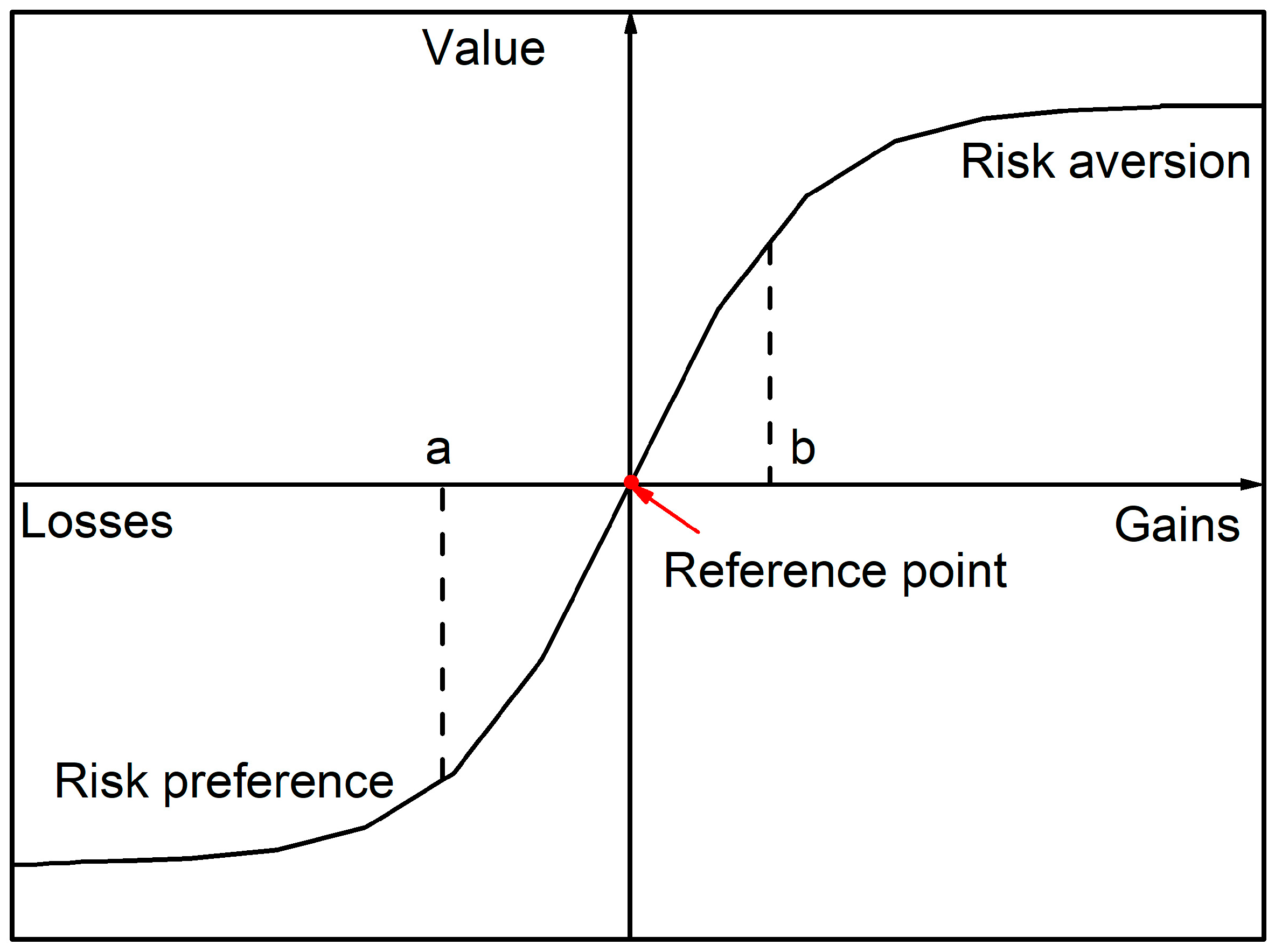
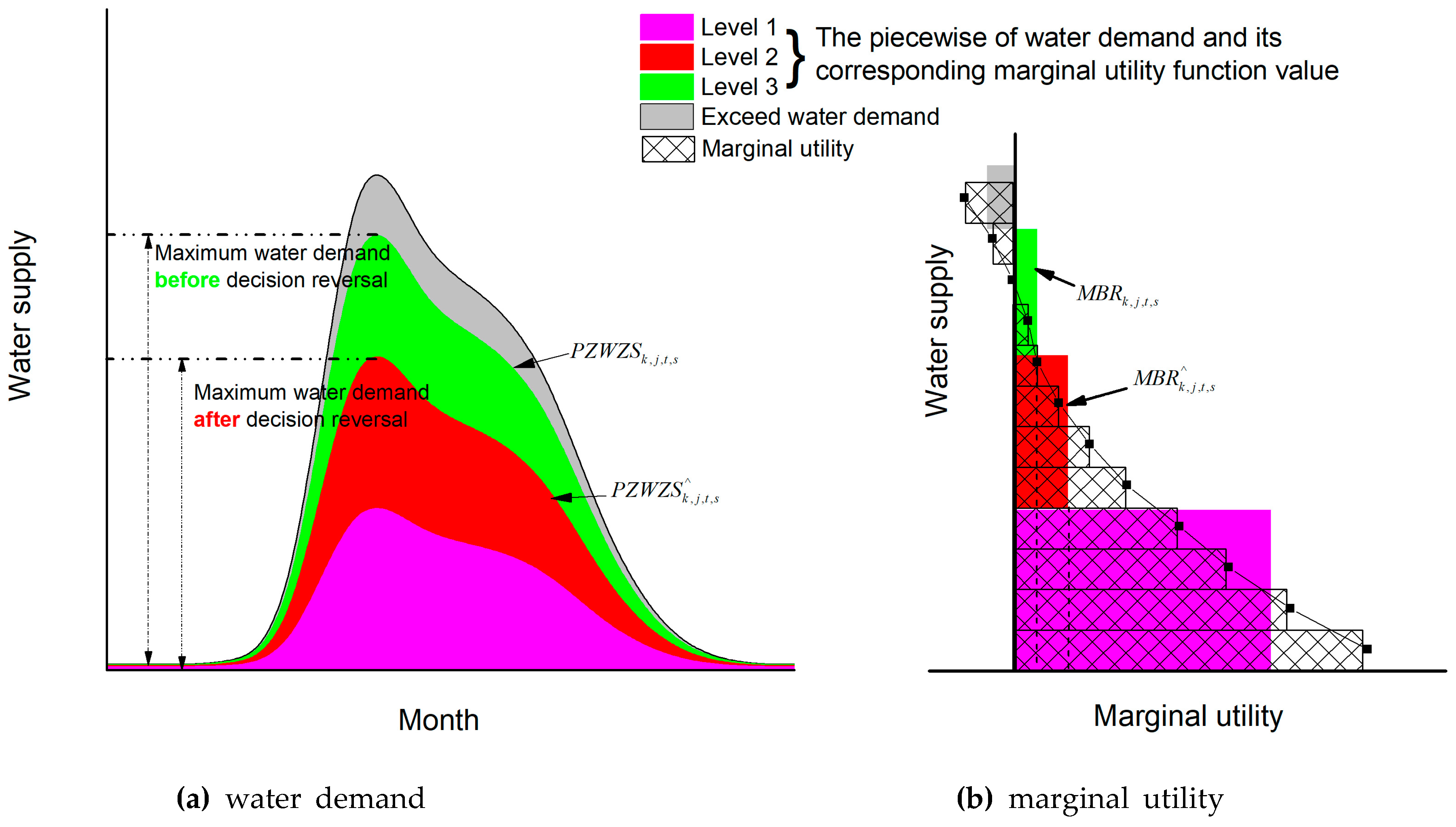


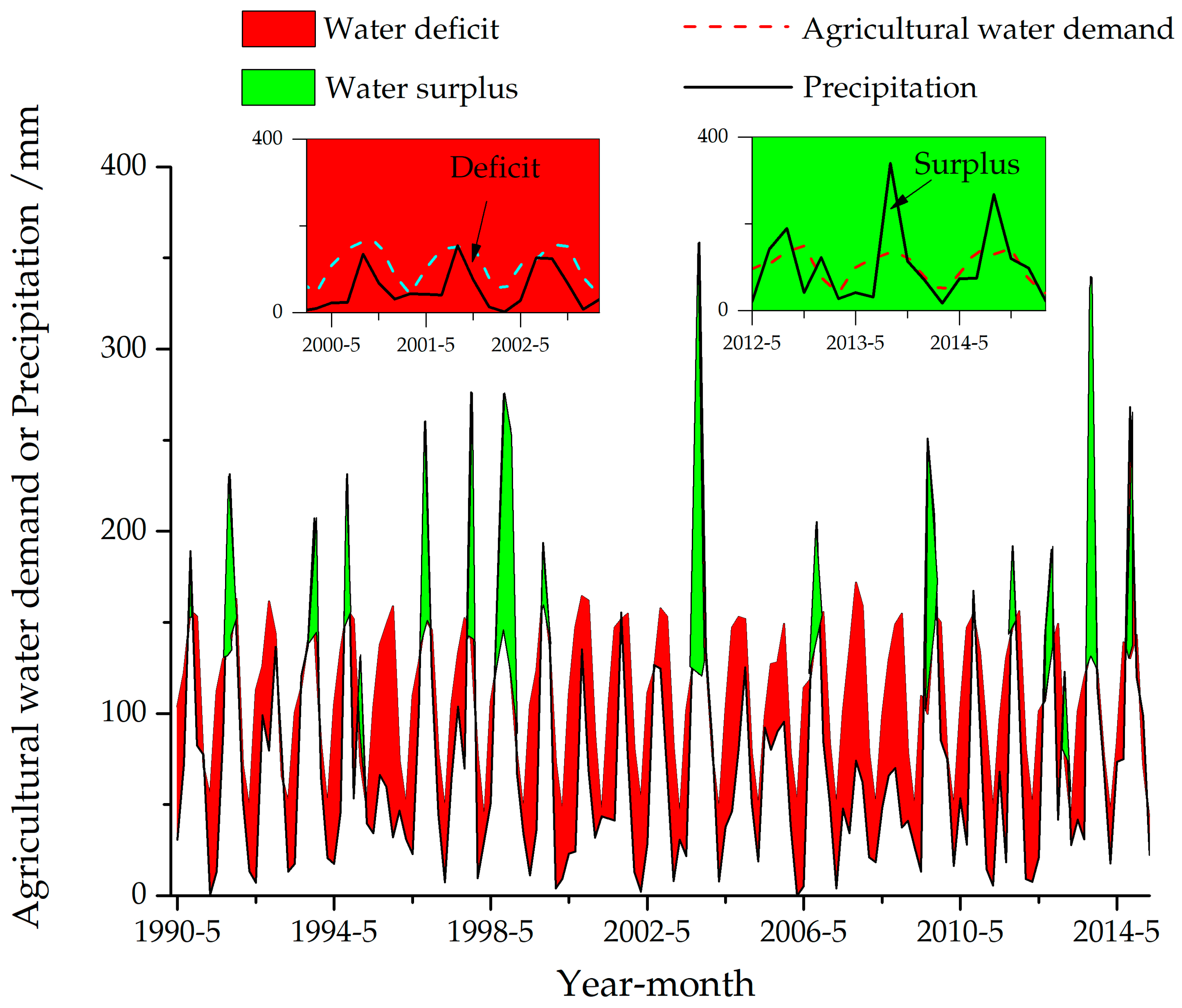
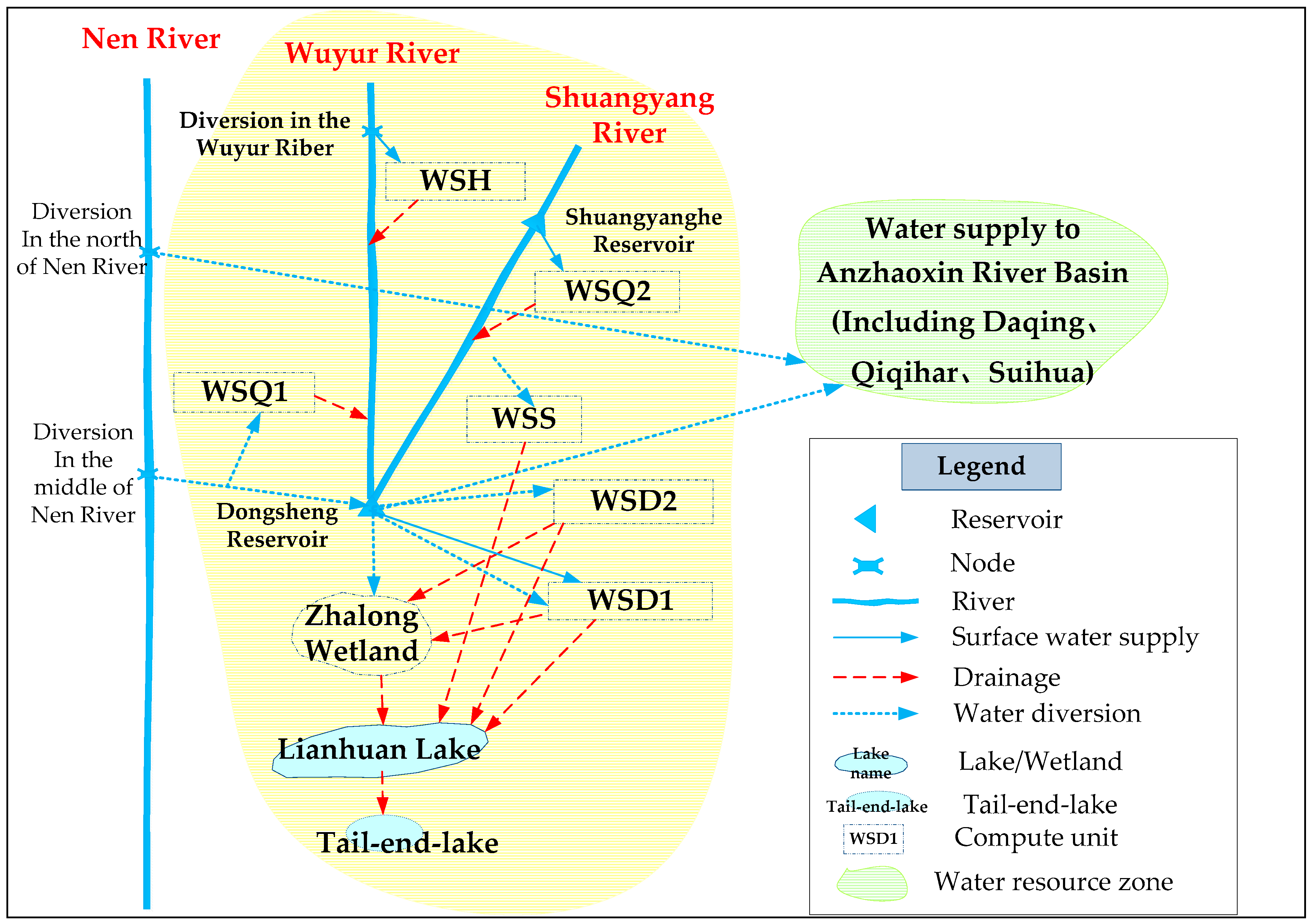


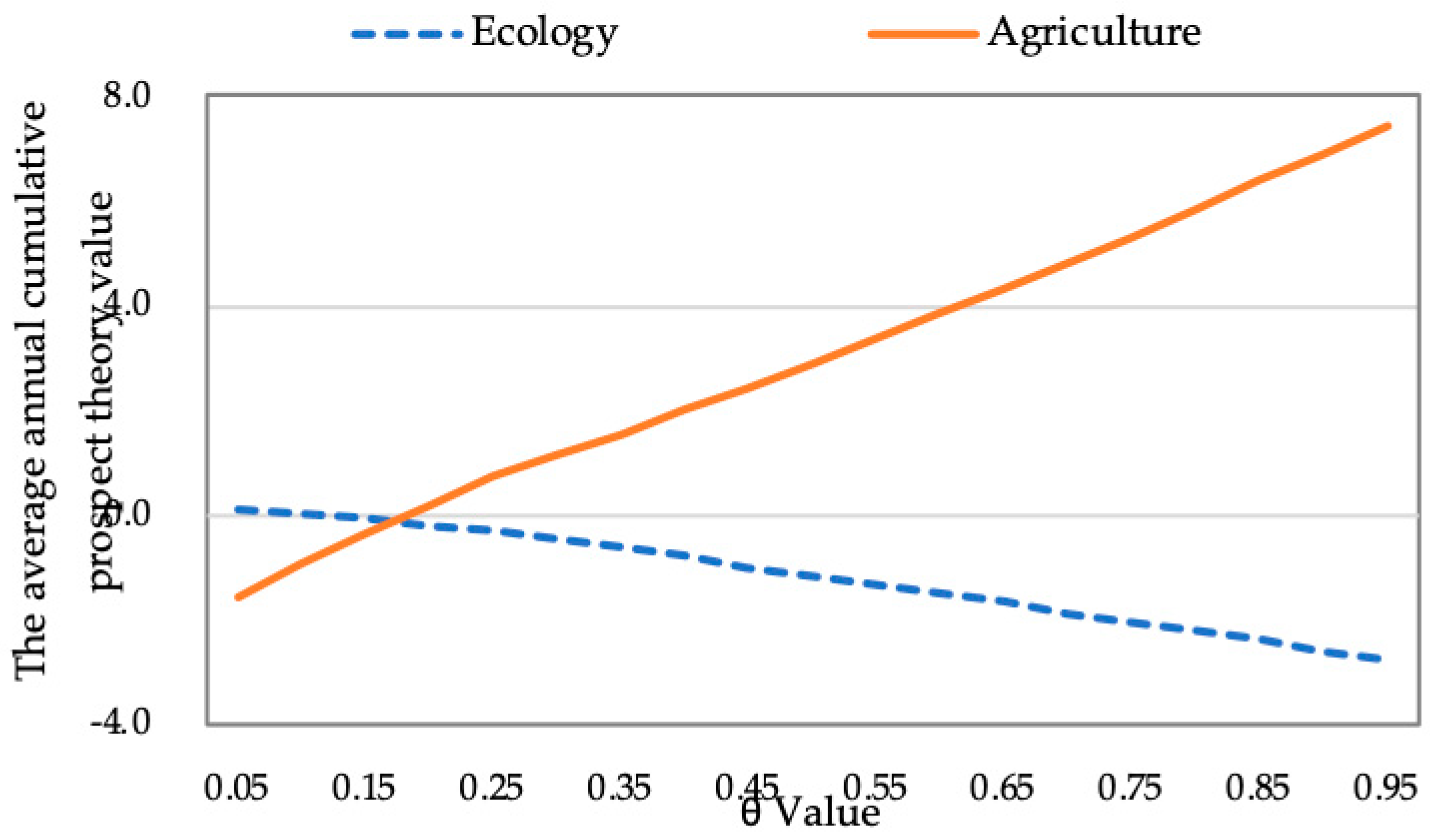
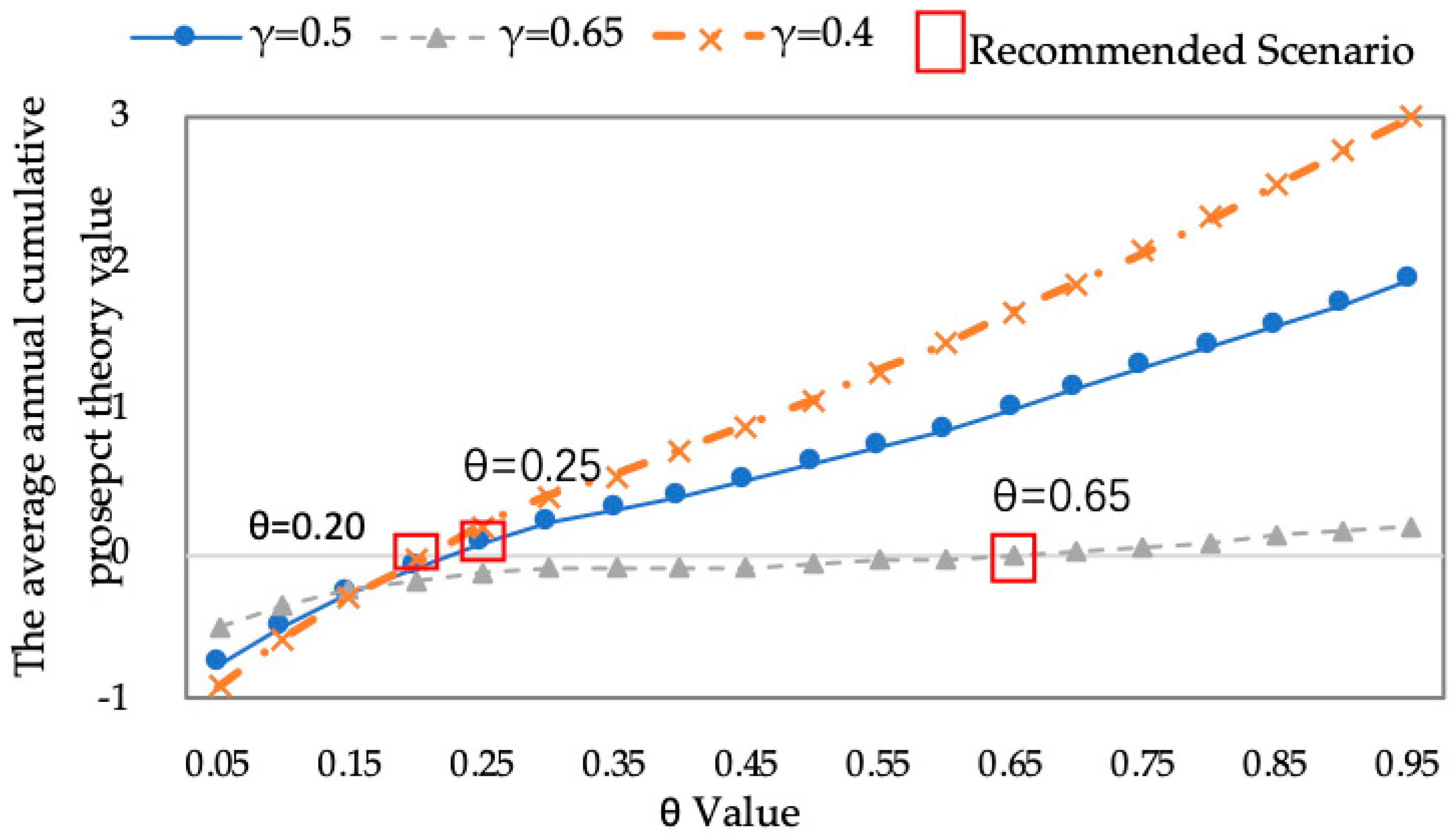
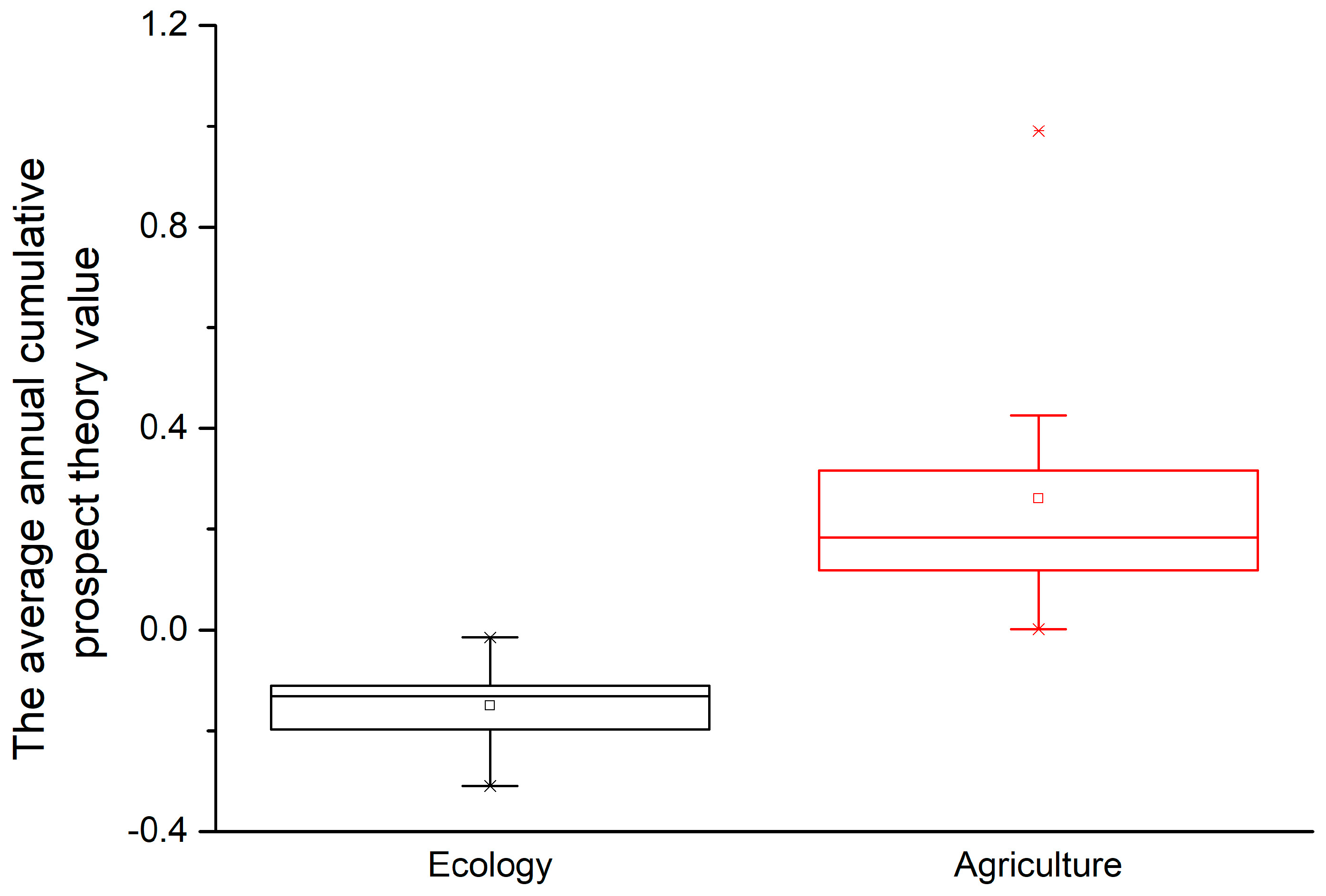
| Category | Status | Average Water Deficit | Water Deficit | Depth of Water Deficit | Maximum Water Deficit Depth | ||||
|---|---|---|---|---|---|---|---|---|---|
| May | June | July | August | September | |||||
| Ecology | Before | 7610.0 | 5459.9 | 2095.4 | 2900.9 | 372.0 | 18438.3 | 49% | 71% |
| After | 817.3 | 568.6 | 232.8 | 322.3 | 354.5 | 2295.6 | 6% | 8% | |
| Agriculture | Before | 2783.7 | 2251.2 | 893.7 | 1522.6 | 222.9 | 7674.0 | 22% | 29% |
| After | 3888.6 | 1879.6 | 893.7 | 1522.6 | 222.9 | 8407.3 | 24% | 40% | |
© 2019 by the authors. Licensee MDPI, Basel, Switzerland. This article is an open access article distributed under the terms and conditions of the Creative Commons Attribution (CC BY) license (http://creativecommons.org/licenses/by/4.0/).
Share and Cite
He, H.; Chen, A.; Yin, M.; Ma, Z.; You, J.; Xie, X.; Wang, Z.; An, Q. Optimal Allocation Model of Water Resources Based on the Prospect Theory. Water 2019, 11, 1289. https://0-doi-org.brum.beds.ac.uk/10.3390/w11061289
He H, Chen A, Yin M, Ma Z, You J, Xie X, Wang Z, An Q. Optimal Allocation Model of Water Resources Based on the Prospect Theory. Water. 2019; 11(6):1289. https://0-doi-org.brum.beds.ac.uk/10.3390/w11061289
Chicago/Turabian StyleHe, Huaxiang, Aiqi Chen, Mingwan Yin, Zhenzhen Ma, Jinjun You, Xinmin Xie, Zhizhang Wang, and Qiang An. 2019. "Optimal Allocation Model of Water Resources Based on the Prospect Theory" Water 11, no. 6: 1289. https://0-doi-org.brum.beds.ac.uk/10.3390/w11061289





